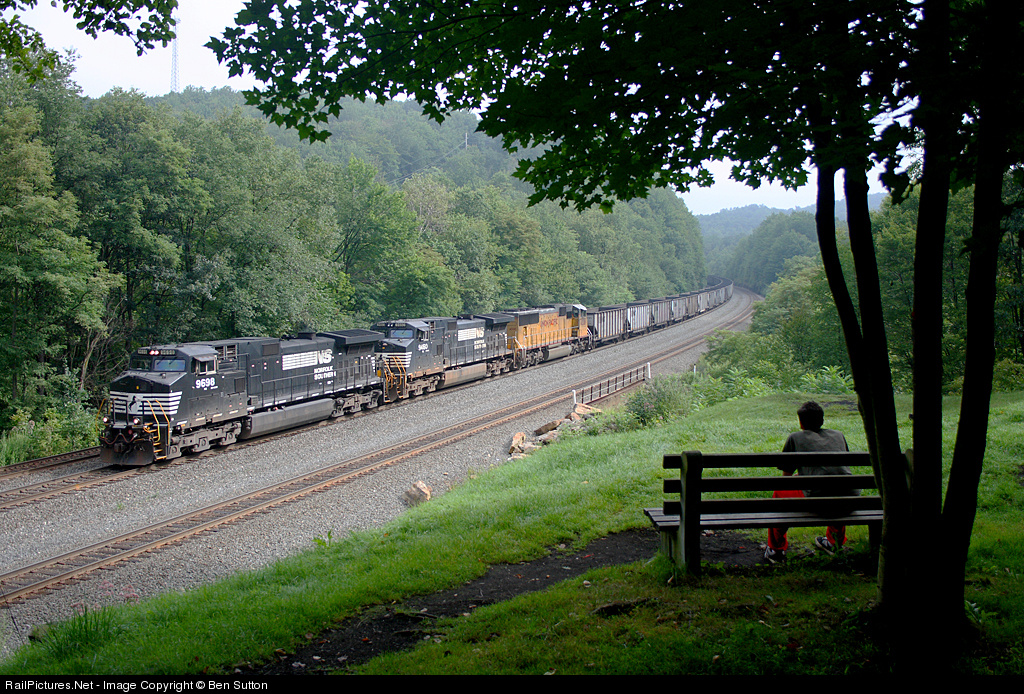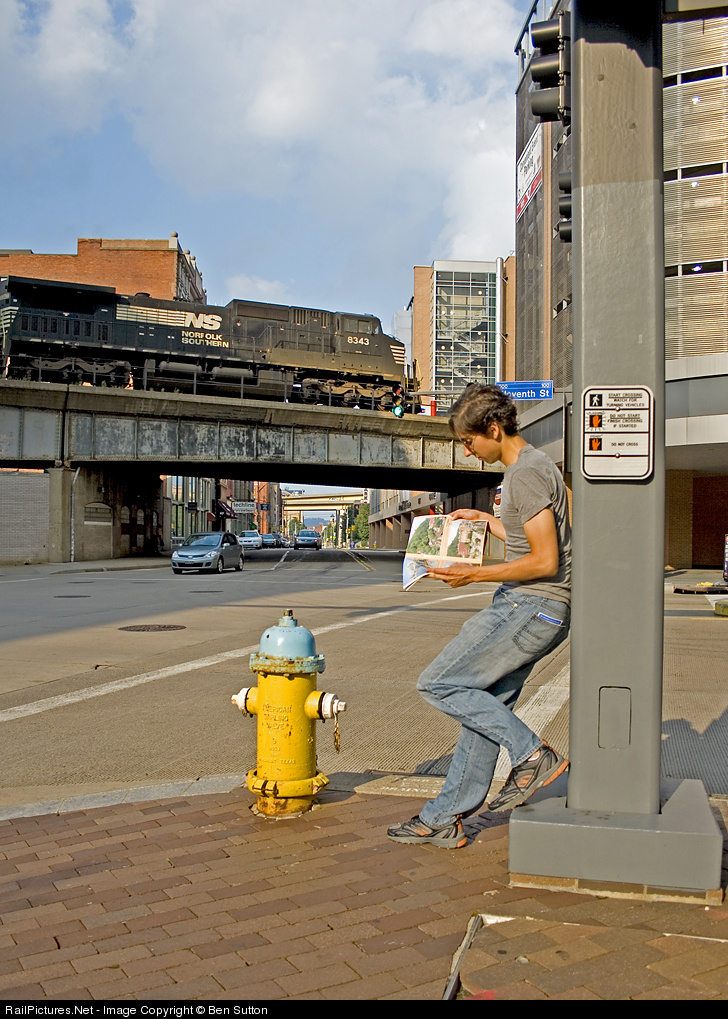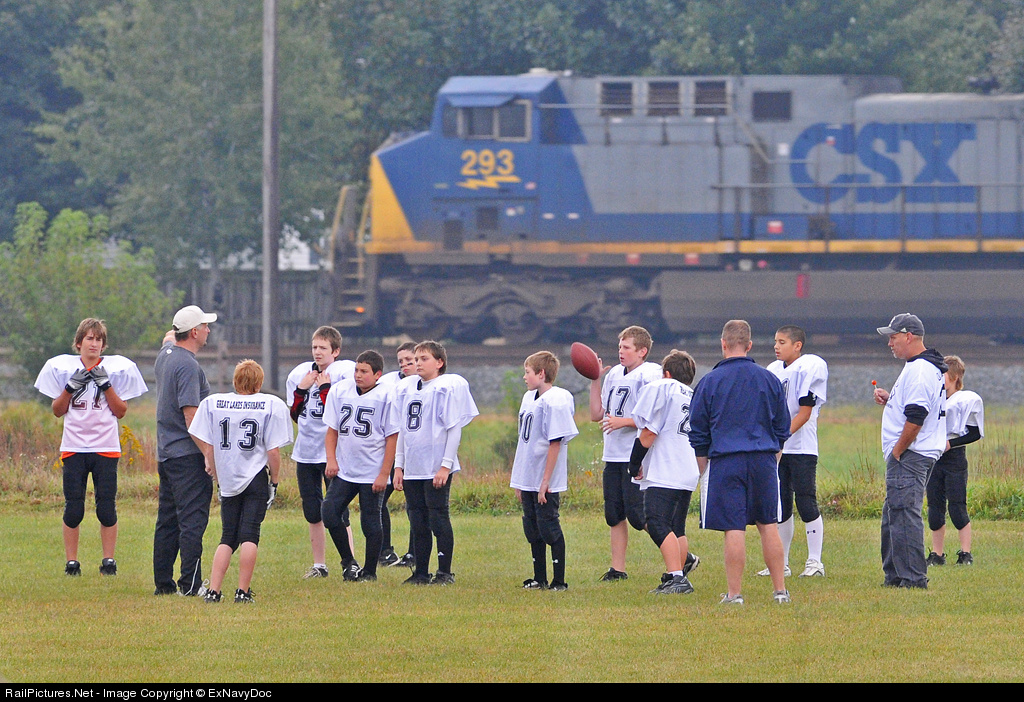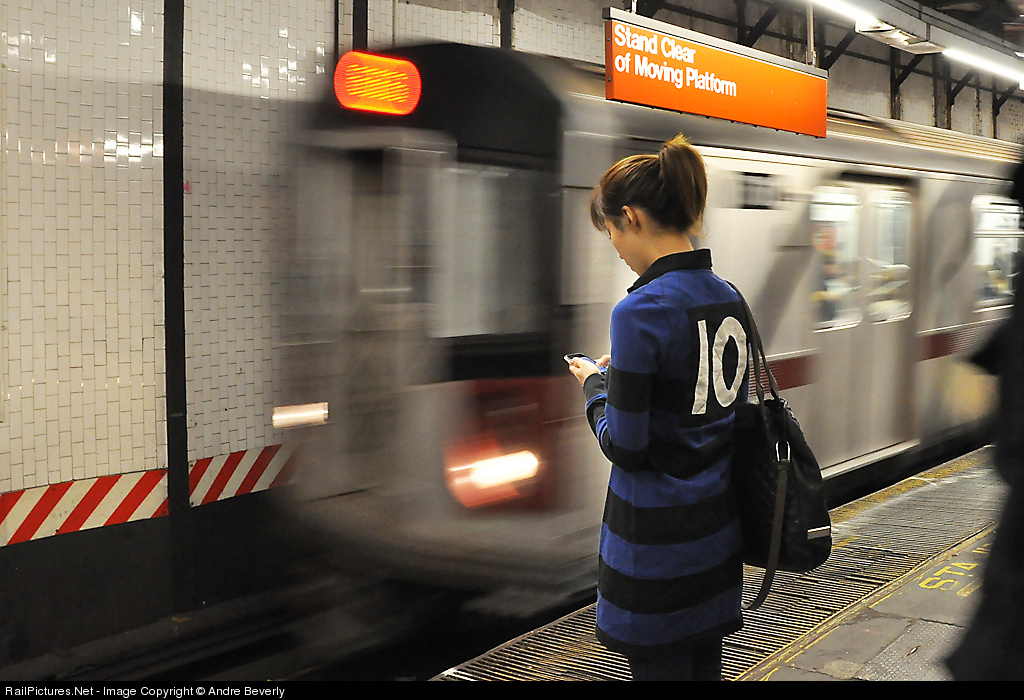Before getting to the big vista shots, however, we will start with a different type of "distant" shot, what I will call the local distant shot, one that captures a smaller scene. John sets the train in the background, in this case between two trees, yet its presence is quite strong.
Obviously this shot isn't as "local", the train sneaks into the scene a bit. Notice also the "look" of this shot, sightly more contrast than one might typically apply. John processes many of his less than full daylight shots in this way (Travis Dewitz does this also), and I find the effect quite appealing. With this in mind, go back and take another look at the first shot.
This shot makes good use of the lack of light, or better said, it creates its contrasts in tone despite the lack of light (thanks, snow!) and through the additional depth created by fog in the background contrasting with the clearer foreground.
This image is an in-between image, as the scene is local but clearly the location has a vista and the train is itself at quite a distance. The tight crop, compared to the images below, results in a hint of space - obviously this is a view from well up high but the bigger scene is not present. I like the way the train peeks in between the trees - this semi-hidden or distant view is characteristic of many of John's images.
The next images are those featuring big scenes, taking advantage of John's location in the Rocky Mountains. Here, the train in the background is only a bit more than a row of trees on the horizon, just enough color and detail to show it is instead a tree. The overall scene is quite pleasant and the brown of the road goes nicely with the muted dark greens of the trees and the blue in the sky. A bit of extra contrast and a notch off the brightness gives the scene a different feel than a more conventional processing.
What a scenic beauty! The train no more than a line, even the headlight a barely visible spot. The scene is nicely composed with the dominant diagonal line, the curves of the line to the left, and the clouds up top with the presence of the complementary orange color.
Here again, the train blends in, just another stretch of darker gray within the scene. The scene is composed nicely, with the line defining the slope of the ridge contrasting nicely to the opposing angles of the lines in the valley, including the train. The contrast is boosted a bit, as one often does for B/W images, and the brightness is muted.
Finally, this beauty of Moffat Tunnel is a "three points of light shot" with the train barely evident, visible primarily because of the headlights on the lead engine. The mountains are majestic, but more so the light is beautifully placed, on the train and the valley by the portal, and then again in the sky and mountains upper left. The darkness elsewhere emphasizes, by contrast, the depts and elevations in the area. This shot beautifully shows why tunnels are needed.
So we have gone through a bit of a tour of John's images, from smaller to larger in the scope of the scene. John's extra touch of contrast makes his work yet more appealing. Great stuff!


































